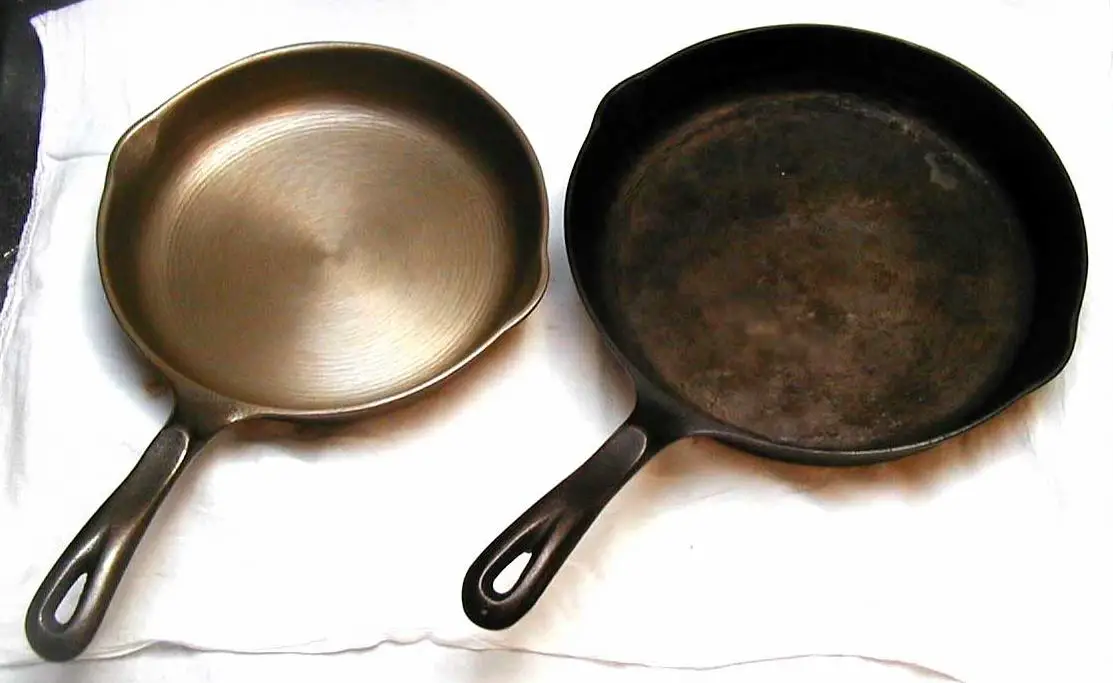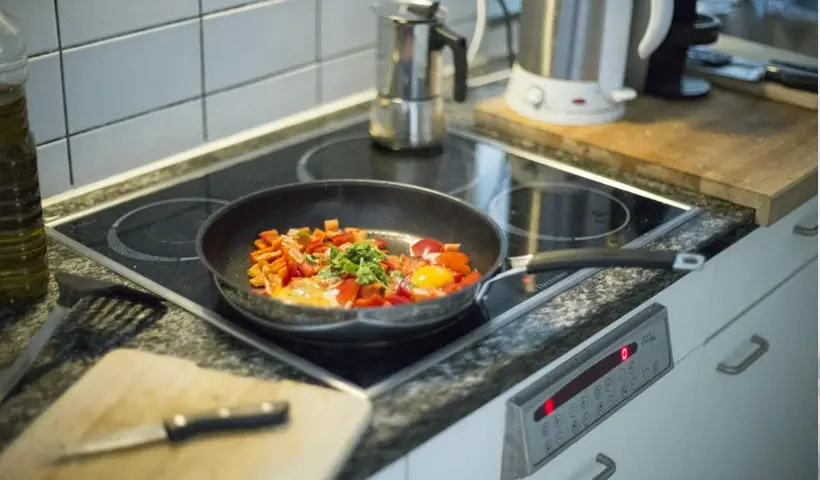Cleaning a Cast Iron Cookware is tricky but not impossible, especially if you know the right technique and here we’re going to tell you exactly that.
Well-seasoned cast iron cookware makes it easier to cook food and provide a useful cooking surface as it heats the food evenly and can be used for various purposes like putting on the stove or in the oven. However, cast-iron is a tricky material to clean and there are a lot of don’ts attached to it which makes the cleaning job even tougher.
If you don’t use the correct means to clean cast-iron cookware then you might end up damaging its surface or its seasoning so make sure you follow the maintenance and cleaning guidelines in order to keep your cast-iron cookware useful for a long period of time. Trust me, with the below-mentioned tips and methods you will be able to keep your cookware clean and efficient for a long time to come.
Things you will need
Make sure that you have all the required items and equipment ready before you start cleaning your cast-iron cookware so that you can complete the process easily and quickly, without any delays.
Materials Required:
- Cast-Iron Cookware
- Sponge
- Stiff Brush
- Clean and Dry cloth or paper towel
- Vegetable oil
- Mild Dish Soap
- Nonmetallic scrubber
Equipment Required:
- Stove (optional)
Before you Start
If you have a new cast-iron skillet or other cookware to clean then you need to provide it with an initial seasoning. This is an easy process and will take barely a few minutes of your time. Seasoning is a hard, protective coating on your cookware which is created by rubbing oil on the cookware’s surface and then heating it on a stove.
When the oil is exposed to heat, it transforms into a thin, plastic-like coating which protects your cast-iron cookware from rusting or from getting damaged. When you build up numerous oil layers on your cookware, it increases the protection against rusting and will also develop some nonstick qualities which make the cookware useful for cooking a number of items. If you don’t protect your cookware with layers of oil then it will easily rust by just sitting in the open air.
Once you have applied an initial layer of seasoning on your cast-iron cookware, the next important thing to do is to use your cookware as frequently as possible, especially if it includes cooking with oil or fat, frying bacon, sautéing vegetables, etc. After every use, you’ll get more layers of seasoning on your cookware which will make your pan better and more efficient to use.
However, this is where it becomes tricky to clean your cast-iron cookware.
Cleaning the Cast-Iron Cookware
We all know that dirty cast-iron cookware requires cleaning but how do you do that. It is a common belief that you cannot use soap for cleaning your cast-iron cookware as it can strip away the seasoning on your cookware that you have worked hard to build. However, this is an incorrect theory, soap can only get rid of the dust and dirt that is present on your cookware but it has nothing to do with washing away the seasoning.
Seasoning is a baked-on fat and has been transformed into a material that can be no longer removed by a bit of mild soap. If you wanted to get rid of the seasoning then you would need to soak it in water, clean it in a dishwasher or scrub with a harsh cleaning or metal scouring pad.
It takes a lot of effort to get rid of the seasoning but that doesn’t mean that you shouldn’t be careful when cleaning your cast-iron item. Make sure that you don’t scrub it with an abrasive material like steel wool or heat it at a high temperature for a long period of time without any fat.

So you can simply clean your seasoned pan with mild dish soap and a sponge. Just follow these steps to clean your cast-iron cookware after each use:
Step 1: Wash with Soapy Water
Use mild dish soap and some water to wash your cookware after you are done with the cooking in it and use a kitchen sponge to wipe it clean. If there is some stuck food particles or some stubborn burnt bits then you can use the synthetic scrubber which is available on the back of the kitchen sponges since it is not as abrasive as steel wool.
If there is some impossible stuff scorched into your cookware then you can sprinkle some salt on it and set it to high heat. Then use some paper towels to get the burnt gunk out of the cast-iron cookware. Salt will act as an abrasive which won’t harm the seasoning while the heat will help you in carbonizing any left-over food bits which will make it easier to scrub it away. Then rinse your cookware to remove the salt and wash it with warm soapy water.
Step 2: Dry it with Clean Cloth
As already mentioned before, soaking your cast-iron dish in water can strip it off all the seasoning so you need to dry it as quickly as you can once it has been cleaned with soapy water. Yes, the seasoning will protect your utensil from forming any rust but if it is left covered in water for a longer time then it might end up rusting your cast-iron cookware after some time.
So make sure that you dry your cast-iron dish thoroughly with the help of paper towels and immediately after washing. Once you have hand-dried the cookware, set it over high heat since the heat will evaporate the water much more quickly. It will remove all the moisture and will ensure completely dry cookware to use.
Step 3: Oil it and Heat
Once your cast-iron utensil is completely dried off, you need to season it with another layer of oil to protect it for its next use. So rub your cookware lightly with vegetable oil and then use a paper towel to absorb the excess oil from your cookware.
Then put your cookware on the stove and set it to high heat. Leave your cookware for a few minutes until your pan is heated consistently and is lightly smoking. You can also use your oven to heat your cookware more thoroughly and follow the initial seasoning process but it can be a little long and tiresome to process. So just use the stovetop to add another layer of seasoning.
Make sure that you don’t let the oil stay in your cookware when heating it up because this may turn the oil sticky and rancid and will affect the taste of food when you cook on it. If you have made this mistake then simply wash your cookware with soapy water and scrub away the oily gunk.
Once you do the above steps, your cast-iron will be clean and ready to be used again.
How to Remove Rust from Cast-Iron Cookware
We all know that rusting is a natural process so even though you have your cookware protected with seasoning, over time your cast-iron cookware will get covered with rust but there is nothing to worry about. With a little maintenance and seasoning process, you can get rid of the rust from your cookware and use it effectively again. Just follow the below steps to remove rust from your cast-iron cookware:
Remove the seasoning layers
If your cast-iron cookware is covered in rust then it needs to be removed and cleaned thoroughly before you can use it again. For this, you will need to strip it of its seasoned surface.
You can do this by washing it with soapy water and then using a scrub to remove the seasoned layers. You can also employ electrolysis in order to get rid of the seasoned layers. Once you have cleaned your utensil thoroughly, you need to immediately dry it with a dry and clean cloth else your utensil will form rust on the utensil surface.
Re-season your cast-iron cookware
Once you have removed the seasoning and dried your cast-iron cookware thoroughly, you need to heat your oven to 500 degrees. In the meanwhile, rub vegetable oil on your cookware surface using paper towels and then using clean paper towels, absorb the excess oil on the surface so that it looks smooth and shiny. Then place your cast-iron cookware in the oven for around an hour and then remove it to let it cool.
By the way, if you aren’t interested in using your oven for this process, you can also season cast iron without an oven. But the more traditional way to season is by using the oven.
You need to follow this process 4-5 times to develop numerous layers of seasoning on your cookware to protect it from rusting or any other kind of damage. Once it is done, let it cool and your cast-iron cookware is ready to be used again. Check more about seasoning your cast iron cookware in the video below.
Tips for Maintaining Your Cast-Iron Cookware
Make sure that you follow the below-mentioned tips for best use out of your cast-iron cookware:
- Wipe the surface of the cookware with a clean paper towel after every use to remove the stuck food bits.
- Always clean your cast-iron cookware with mild dish soap and warm water after every use.
- Never use harsh detergent or scour to scrub your cookware’s surface.
- Always season your cookware with 5-6 layers of oil before you use it for cooking.
- Never place your cookware on a stove and heat it without oil in it.
- Never soak your cast-iron cookware in water and dry it immediately after it is washed.
If you follow the above-mentioned tips and cleaning process then you would be able to clean your cast-iron cookware effectively and will be able to use it for a long period of time.
